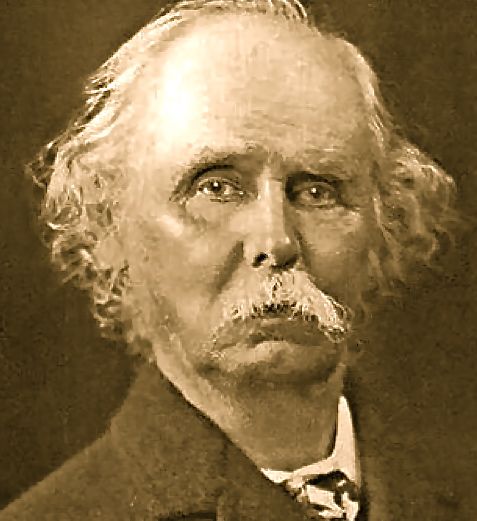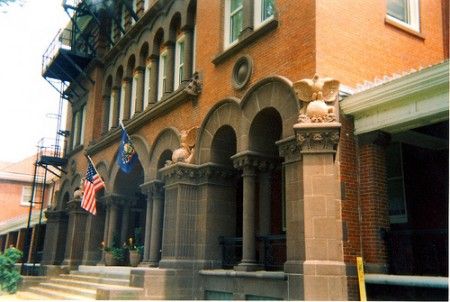Ways & Means is a weekly column by Mark Alan Hughes on economics, politics and sustainability in Philadelphia.
Much like watching your country’s flag rising at an Olympic medal ceremony, it is exciting to see your city in the running for the mantle of “innovation cluster.”
The term is a mantra of cities these days, much as “green jobs” and the “creative class” stood at the buzzy center of previous idea cycles. Indeed, these conceptual bumper stickers have much in common. But the “innovation cluster” has the firmest intellectual foundation, being part of a conversation about cities that has continued vigorously for over 100 years.
Alfred Marshall was a British economist who wrote the very influential 1890 book Principles of Economics. Like Shakespeare, Marshall is a writer you have probably quoted without ever knowing it: “On the margin,” “economies of scale,” “supply and demand curves” and “diminishing returns” all first appear in their modern form in Marshall’s book. He was also the first to discuss the ways in which cities improve the performance of markets, burdening a cool idea with a nerdy word: “agglomeration.” Agglomeration is when a firm is more productive because of increased activities outside the firm itself and beyond its control.
What is the difference between a firm being located in Philadelphia or in the middle of Pennsylvania? Economists and geographers have described many differences between the two locations. But one idea generates the most attention these days — the notion that a company located in dense Philadelphia may be closer to other companies in its own industry than it would be if it was located in a less dense locale. This is a called a localization effect, and when localization is strong enough the resulting concentration within an industry is called a cluster. Famous examples are software in the Silicon Valley of San Jose, Calif. and its suburbs, carpets in Dalton, Ga., and furniture in High Point, N.C. The idea is that the bigger the cluster, the more productive the firm located in that cluster.

Alfred Marshall
Why would being in a cluster cause a firm to be more productive? It was Marshall who first provided three of the strongest explanations, which are still being debated and measured by scholars like Michael Porter and Ed Glaeser today.
The first explanation is called input sharing. In volatile knowledge-intensive activities, there are more firms involved in the making of something (vertical disintegration, for you B-schoolers) in order to manage the risk of needing some specialized input. The classic example is movies: Why would every studio have its own CGI department when they can always purchase the latest technology from the company Industrial Light & Magic? In a cluster, a firm has access to more input sharing and thereby lowers its purchased input costs.
The second explanation of localization effects is called labor market pooling. Here the idea is that larger clusters offer better matches between workers and firms. When quits and fires happen, it is easier for a worker to get a new job, and for the firm to fill the old job in a location where an industry and its specific skills are more concentrated into a cluster.
The third explanation is called knowledge spillover. Again, Marshall got there first: “The mysteries of the trade become no mysteries; but are as it were in the air…” (The literary skills of economists have declined precipitously over the past century.) This idea is the most nuanced and, therefore, the hardest to measure. But it also seems like the big enchilada, especially when it comes to intentional change designed to encourage cluster development in particular places. Do ideas leading to innovations and entrepreneurs leading to growth benefit from clusters — from the concentration of industry-specific activities at a geographic scale, allowing for face-to-face interactions? If the answer is yes, and the evidence is mixed, then the implications are huge.
First, knowledge spillovers depend heavily on the type and volume of knowledge produced locally. You can import some of it, but that’s far less efficient than exposure to new knowledge before anyone knows it’s worth importing. Network connectivity among existing local knowledge also creates opportunities for idea brokerage in place, increasing knowledge spillover.
Second, communications technology doesn’t undermine the importance of concentration. Sure, anything that can be written down can be conveyed over any distance between two internet connections. But there is more than just codified, technical knowledge in these spillovers. The so-called tacit knowledge of individuals is where much of the innovative spillover occurs, and this is far more difficult to convey over distance.
Third, even within a local concentration, cognitive and social distance will matter as much as physical distance to a cluster: Knowledge has to spill over just the right distance to work. If firms and people operate with very different knowledge, languages, organizational cultures and settings, then knowledge can’t spillover — universities and corporations, psychologists and engineers, elected officials and asset managers, all have plenty of sources for miscommunicating. But if there is too little cognitive distance, then there will be competitive reasons to not communicate and impede knowledge spillover.
All of this suggests that there are compelling reasons to identify, foster and strengthen innovation clusters as a strategy for regional prosperity. Building on the work of Harvard’s Michael Porter, the non-profit think tank Council on Competitiveness and the Brookings Institution have led the charge on this issue, with the Institution’s own Bruce Katz and Jennifer Bradley making the case in a recent Forefront article.
President Obama has also picked up the cluster ball and run with it. In 2010, he vowed to send $200 million to regional innovation clusters and by 2012, had given in excess of that to support cluster efforts across the country.

Can Philly’s Navy Yard be transformed into an innovation cluster? Credit: Flickr user ams11
But as the research we just sprinted through also suggests, there are enormous challenges when it comes to supporting innovation clusters in a productive way. It will be very important to evaluate the efficacy of the approach.
These challenges are especially critical to understand for Philadelphia, which in 2010 received $130 million from the Obama administration to create the Greater Philadelphia Innovation Cluster at the Navy Yard. The question for us is, how do we measure the impact of the Navy Yard cluster? Well, you start with a theory of change; state what you expect to change and why, as well as what you will measure to know whether change happened.
[Disclosure: Mark Alan Hughes helped propose and establish the Energy Efficient Buildings Hub at the Philadelphia Navy Yard. While his individual role there is winding down, the University of Pennsylvania, where he remains on the faculty, represents about a tenth of the ongoing Hub effort. – Ed.]
For a regional innovation cluster, the Council on Competitiveness constructed a theory of change purporting that idea generation leads to idea development, which leads to commercialization, which leads to productivity, which leads to prosperity. Under that axiom, we could measure change in each of those steps by monitoring what emerges from these clusters, and from there extrapolating it to jobs, wages, average income and poverty.
This summer, GPIC changed its name to the Energy Efficient Buildings Hub to better reflect its substantive mission. But the testing of the innovation cluster idea remains an equally important and nationally significant opportunity at the Navy Yard, in my view. And indeed, the Departments of Energy and Defense, the Economic Development Administration at the Department of Commerce, and the Small Business Administration have all announced or funded new innovation cluster programs. Now is the time to invest in learning how well they work before Innovation Clusters become another half-scraped bumper sticker on the urban policy rear window.
Mark Alan Hughes is a Distinguished Senior Fellow at PennDesign and a Senior Fellow of The Wharton School’s Initiative for Global Environmental Leadership.

Mark Alan Hughes is a Distinguished Senior Fellow at PennDesign and an Investigator at the US Department Of Energy’s Energy Efficient Buildings Hub at the Philadelphia Navy Yard. He is a Faculty Fellow of the Penn Institute for Urban Research, a Senior Fellow of the Wharton School’s Initiative for Global Environmental Leadership, and a Distinguished Scholar in Residence at Penn’s Fox Leadership Program. He has been a senior fellow at the Brookings Institution, the Urban Institute, and a senior adviser at the Ford Foundation. He was the Chief Policy Adviser to Mayor Michael Nutter and the founding Director of Sustainability for the City of Philadelphia, where he led the creation of the Greenworks plan. Hughes holds a B.A. from Swarthmore and a Ph.D. from Penn, joined the Princeton faculty in 1986 at the age of 25, has taught at Penn since 1999, and is widely published in the leading academic journals of several disciplines, including Economic Geography, Urban Economics, Policy Analysis and Management, and the Journal of the American Planning Association, for which he won the National Planning Award in 1992.
















